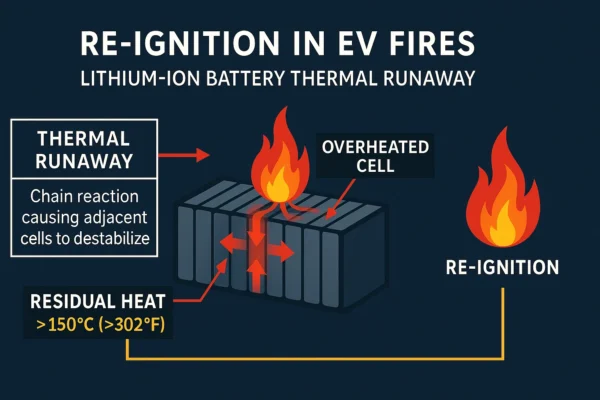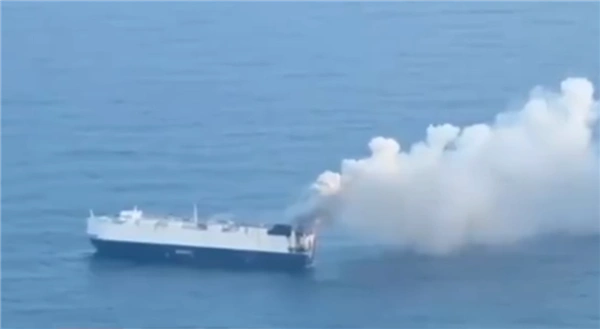Welding produces extreme heat, flying sparks, and welding spatter—all of which present serious risks to the welding operator, nearby welding equipment, and the working area. That’s why a blanket for welding is more than optional—it’s a critical piece of personal protective equipment in any hot work environment.
A welding heat blanket is a specially engineered shield made from flame retardant materials such as fiberglass, silica, or vermiculite. These materials are designed to block radiant heat, sparks and spatter, and molten slag generated during operations like MIG, TIG, arc welding, or plasma cutting. Depending on the material and coating, many blankets for welding are rated to withstand temperatures ranging from 1,000°F to 2,300°F (538°C to 1,260°C) and often incorporate flame retardant chemicals to ensure consistent performance.
Welding blankets are typically categorized into light-duty, medium-duty, and heavy-duty types. Each category differs in thickness, flexibility, and heat resistance, making each welding blanket suitable for different welding processes and environmental conditions. For example, a lightweight welding heat blanket used for TIG welding in an indoor shop may fail completely under the slag and heat exposure of vertical MIG welding in an open-air welding area.
If you’re new to welding protection or want a full overview of blanket functions, visit our Welding Blanket Guide for foundational knowledge.
Selecting the wrong blanket for welding doesn’t just reduce worksite efficiency—it can compromise safety. There have been real-world cases where using the wrong welding blanket led to scorched surfaces, failed protection from sparks, and costly downtime.
So how do you choose the right fire retardant solution?
In this guide, we’ll explore the main types of welding blankets, their applications, and how to choose the best blanket for your welding process and working environment.
Types of Welding Blankets
Blankets for welding are classified into three general categories based on their base material, thermal performance, and intended application: light-duty, medium-duty, and heavy-duty. Understanding these distinctions is essential for selecting the proper fire retardant blanket that meets both performance and safety compliance requirements.

Light Duty
Light-duty welding blankets are typically manufactured from plain fiberglass fabrics with minimal or no surface coating. These fabrics generally weigh between 430 to 550 g/m² (approx. 13–16 oz/yd²), and are designed to handle continuous temperatures up to 1,000°F (538°C). Their flexibility and low cost make them ideal for TIG welding, equipment shielding, or protecting flooring in indoor shops. However, due to their limited mass and lack of surface treatment, these blankets are not recommended in environments with significant welding spatter, slag, or vertical spark exposure. They are also unsuitable for overhead applications and offer no water or chemical resistance.
Medium Duty
For most active industrial environments, medium-duty welding blankets provide a more robust solution. These blankets are based on fiberglass or high-silica fabrics, often enhanced with flame retardant chemicals and coated for additional durability. Typical fabric weights range from 700 to 1,100 g/m² (20–32 oz/yd²), withstanding continuous heat exposure up to 1,300°F to 1,800°F (704°C to 982°C) depending on the coating and weave density. Common surface coatings include:
| Coating Type | Key Features | Typical Temperature Resistance |
| Acrylic | Abrasion-resistant, general-purpose | 1,000°F (538°C) |
| Silicone | Flexible, water- and oil-resistant | 1,000°F–1,300°F (538–704°C) |
| Vermiculite | Slag-resistant, high-radiant heat protection | 1,500°F–1,800°F (815–982°C) |
| Graphite | Low-friction surface, useful for sliding parts | Up to 1,800°F (982°C) |
Coated welding blankets in this category are widely used for MIG, stick welding, and oxy-fuel cutting, especially in field service, shipbuilding, and fabrication shops. High-performance uncoated fabrics such as Kevlar, carbon felt, and high-silica textiles are often chosen for jobs involving high mechanical stress or localized insulation. While medium-duty blankets are versatile and available with FM Approvals, care must be taken to avoid mechanical damage to the coating or contamination that could compromise their protection from sparks and molten metal.

Heavy Duty
When heat levels rise above standard industrial thresholds, heavy-duty welding heat blankets are required. These are typically constructed by combining vermiculite-coated fiberglass or silica cloth with an additional aluminum foil or reflective film layer, enhancing resistance to radiant heat. The laminated structure allows these fire retardant blankets to tolerate short-term peak exposure up to 3,000°F (1,650°C), though typical continuous operation ranges from 1,800°F to 2,300°F (982–1,260°C). They are the blanket of choice in overhead welding, molten metal containment, and pipe welding around boilers, pressure vessels, and heat exchangers. These heavier blankets are usually between 1,200 to 1,600 g/m² (35–47 oz/yd²), offering superior thermal shielding but less flexibility and higher weight.
It’s important to note that improper storage—such as folding laminated blankets—can cause creasing or delamination of the foil layer. To maintain integrity and lifespan, heavy-duty blankets should be stored rolled or hung flat whenever possible. Most high-end models in this category comply with NFPA 51B, OSHA 1910.252, and carry FM Approvals, making them fully suited for use in regulated environments where welding hazards are compounded by flammable gases, pressurized systems, or confined spaces. For additional guidance on storage and care recommendations by blanket type, see our full Welding Blanket Maintenance Practices article.
Choose the Right Welding Blanket
Match Blanket to Process
Selecting the right blanket for welding depends on the welding process, temperature exposure, and the surrounding welding area. For low-heat jobs like TIG welding, a light-duty welding heat blanket made from fiberglass offers up to 1,000°F (538°C) protection. It is ideal for shielding tools and surfaces in indoor working areas, but not suited for welding spatter, overhead use, or molten metal contact.
For MIG, stick welding, or oxy-fuel cutting, use a medium-duty fire retardant option. These welding blankets use coated fiberglass or high-silica fabric, offering protection up to 1,800°F (982°C). Choose coatings based on conditions:
Silicone: Resists oil, moisture
Vermiculite: Deflects slag and heat
Graphite: Flexible, low-friction
Acrylic: General-purpose use
Weight typically ranges from 700–1,100 g/m². High-performance materials like carbon felt or aramid improve strength and flexibility for tough applications.
For Extreme Heat Jobs
In high-risk tasks like plasma cutting, arc gouging, or pipe welding, use a heavy-duty welding heat blanket. These often combine vermiculite or high-silica fabrics with foil lamination to reflect radiant heat. Rated for up to 3,000°F (1,650°C), they are ideal for overhead work but are heavier and less flexible. Store flat or rolled to avoid damaging the foil.
When working around flammable gases, such as in refineries or offshore rigs, thermal protection is not enough. Use a Welding Habitat System with ventilation, gas detection, and fire retardant barriers. This setup ensures full compliance with OSHA 1910.252 and NFPA 51B.
Features and Compliance
Some welding heat blankets come with stitched edges to prevent fraying and grommets for easier hanging—useful in vertical or mobile setups. While light-duty personal protective equipment may lower initial costs, it may degrade quickly under sparks and spatter. Long-term savings come from higher-grade fire retardant blankets with greater durability and fewer replacements.
Always confirm certifications. Look for FM Approvals, NFPA 51B, or other required site-specific standards before use.
Whether you’re shielding against welding spatter in a light-duty shop or working around pressurized gas lines on a heavy industrial site, selecting the proper fire retardant solution matters—not just for compliance, but for real-world protection.
With over 20 years of hands-on experience, Safeprotex delivers proven blanket for welding solutions used by fabricators, contractors, and OEMs across the U.S.
Talk to our team today to get the right blanket—certified, durable, and engineered for your exact application.




